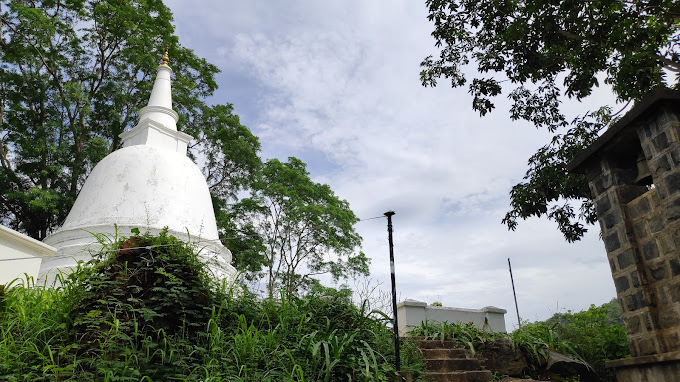- Area: Sri Lanka
- Type: Attractions
- Group: Buddhism pre christian era ruins Viharaya
Katugahagalge Rajamaha Viharaya is an ancient cave temple with its origin going back to the pre-Christian era with some unique features. According to folklore the temple is believed to be built by King Walagamba during the period he was building up an army from the south to take back the throne which was seized by Indian invaders from him in 104 BC.
The main cave in the temple is 300 feet long and about 50 feet wide. Due to the size of this cave, both the image house and the bhikku residence (Sangawasa) have been built under this cave. This is a rare instance in which both these structures are found under a single cave.
There are 2 ancient stupas on a rocky outcrop at about 200 feet in height. Both have been in a highly dilapidated state resembling a mound of earth. Unfortunately, a new stupa has been built over one of these stupas. The other ancient stupa still survives in its original state.
One of the caves in the temple is said to have been used by Therapuththabhaya Thero, one of the 10 Generals of King Dutugemunu’s army who became a Buddhist priest after the war with Elara. The cave lies about 30 feet above ground with only 3 tiny steps cut into the rock. Today a ladder made of Bamboo trees is used to reach the cave.
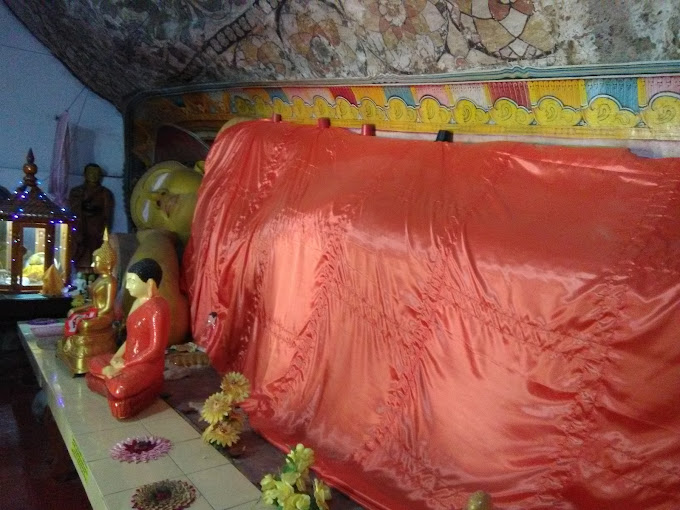
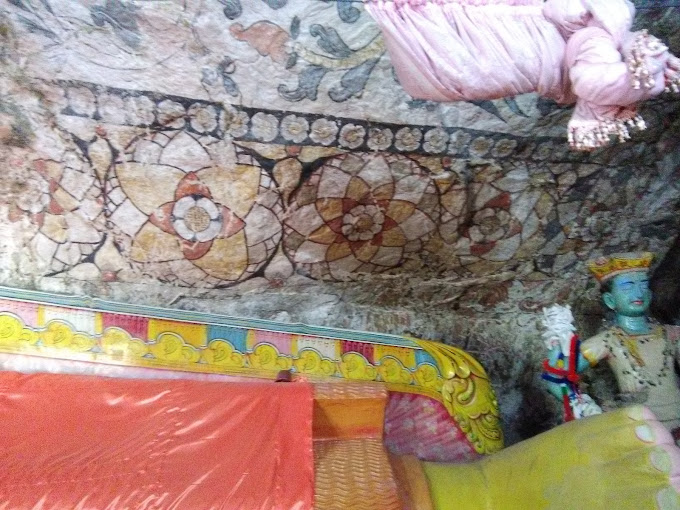
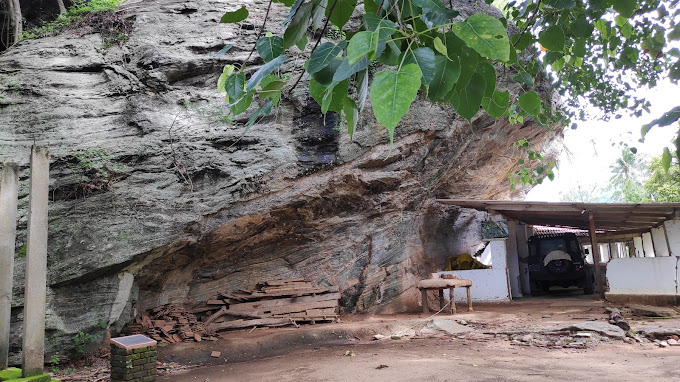
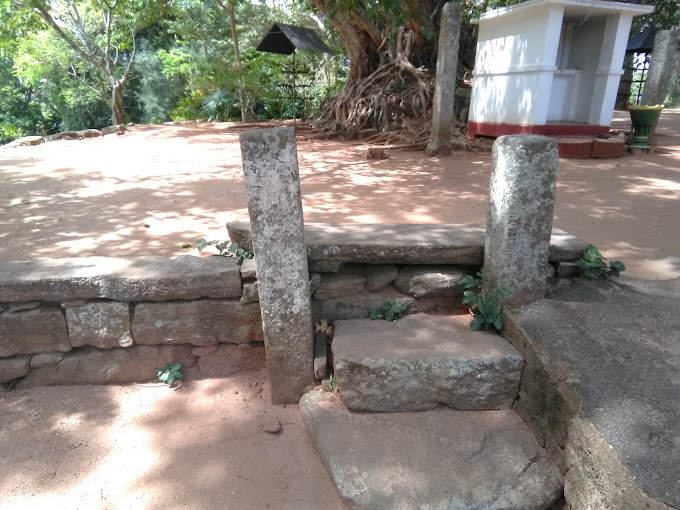
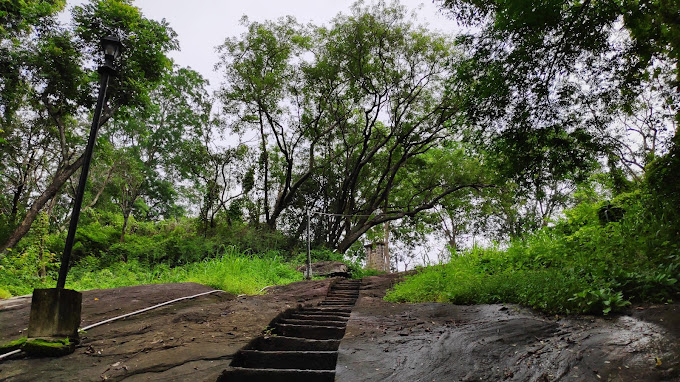
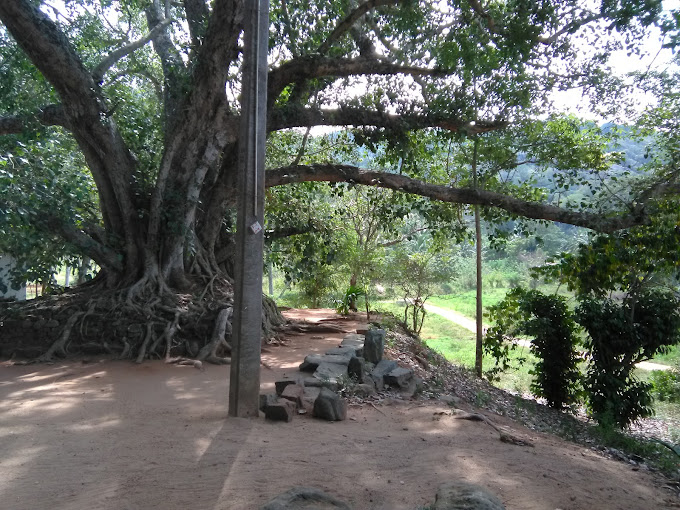

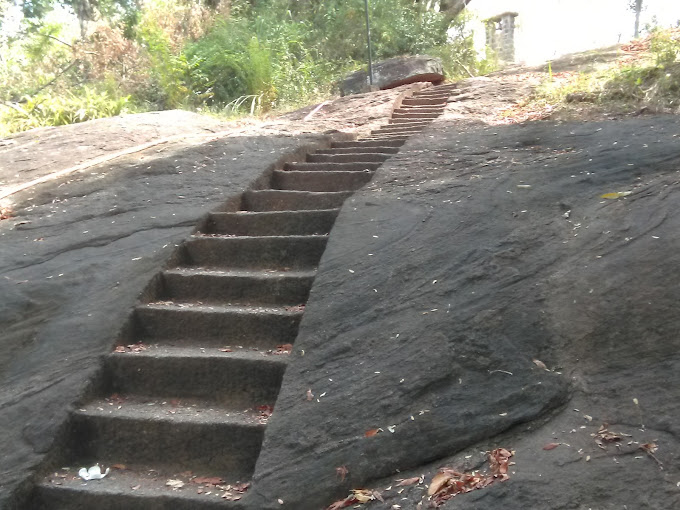
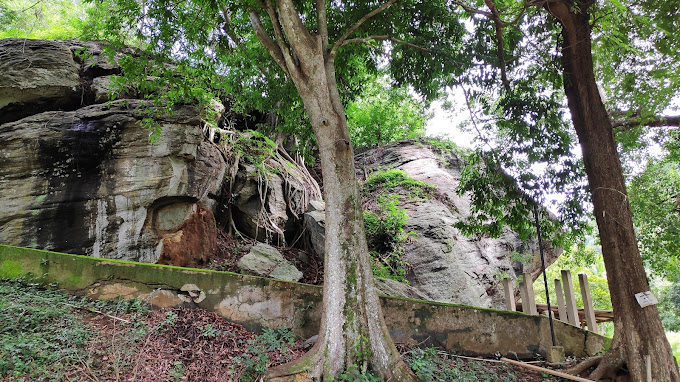
In addition, the temple also carries a “Nissanka Gau Lipiya” a pillar inscription by the king Nissankamalla (1187-1196) of Polonnaruwa kingdom. Nissankamalla’s origin was a Kalinga region in India. A great admirer of himself, he made sure his name is etched on every monument he built or repaired. Some examples where his name had been used to identify structures are Nissanka Latha Mandapaya and Nissanka Daladage. He also defined a measurement of distance called “Nissanka Gauwa” which is believed to be approximately 4 miles (6.5 kilometers).
Once becoming the king, Nissanka Malla feared an uprising from faraway regions like Rohana due to his Kalinga origins and he had installed pillar inscriptions at Every Nissanka Gauwa up to Ruhuna (Ambalanthota) from Polonnaruwa instructing his countrymen from Rohana not be too proud or greedy for power. The unique feature of these pillar inscriptions is that all these inscriptions end with the words “Nissanka Gauwai”.
The pillar inscription at the Katugahagalge Temple is said to have been brought to the temple in 1880 when it was discovered in a close by chena cultivation. The king advises his subjects in Ruhuna to avoid being subjected to humiliating remarks from Maya Rata, carving for others’ possessions, and avoiding being haughty. Mention is being made to two missions to the Pandya country where Thulabara presentations ( gifts presented to the weight of one’s weight) were made and returning back to Sri Lanka with concubines, elephants, horses, and gifts from the Chola kingdom. The performance of a tour of tri kingdoms ( Ruhuna, Maya, Pihiti) through rocky and torturous passages such as the Samanala mountain is also mentioned in the inscription. In the end, this pillar has been identified as a Gau Kanuwa of King Nissanka Malla.
Thus the exact original location where this pillar stood is now forgotten. But it reveal that the main road from Polonnaruwa to Ruhuna was through this area.
Katugahagalge Rajamaha Viharaya lies 7.5 km from Buttala. Take the Badalkumbura Road from Buttala for 6.5 km to reach the notice board indicating the turn-off to the Katugahagalge Rajmaha Viharaya. Take the right turn from this notice board and travel 1 km along this road to reach the temple. The Koongaha Wewa (reservoir) lies just as you take the right turn from the Badalkumbura road.

